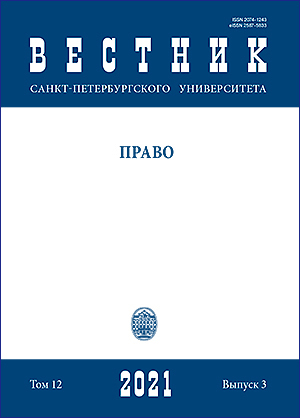Payment for legal services in the USA civil procedure: Contingent fee, American rule and their impact on the judicial caseload
DOI:
https://doi.org/10.21638/spbu14.2021.313Abstract
The article deals with the influential mechanism of the contingent fee and the American rule on the number of filings to the US judicial system, and, consequently, on the judicial caseload as a whole. The author concludes that at the moment there is no uniform idea about the role of contingent fee arrangements and the American rule in the growth of the number of filings to courts. There are two opposing views on this issue: those who stand on the side of the plaintiffs’ attorneys (and therefore for the contingent fee and for the American rule), on the one hand, and those who act on behalf of the defendants (which means against these institutions). With certainty, it can only be argued that the contingent fee and the American rule complement each other. The contingent fee justifies its existence by expanding the accessibility of justice. Under the fee, those who are unable to pay for the services of a lawyer get the opportunity to go to court. And this availability is largely based on the plaintiff ’s belief that even in the event of a loss, he will not have to pay the defendant’s costs. Together, these rules, according to their supporters, make it possible to ensure the implementation of one of the unshakable values — the right of every American to get their “day in court”. At the same time, many facts indicate that the “bundle” of the contingent fee and the American rule has led to an increase in the number of clearly unreasonable, frivolous, nuisance lawsuits that are filed not with the aim of obtaining a positive court decision, but only to persuade the defendant to accept a settlement agreement on the payment of compensation to the plaintiff.
Keywords:
USA civil procedure, USA litigation crisis, frivolous lawsuits, contingent fee, American rule
Downloads
References
Downloads
Published
How to Cite
Issue
Section
License
Articles of "Vestnik of Saint Petersburg University. Law" are open access distributed under the terms of the License Agreement with Saint Petersburg State University, which permits to the authors unrestricted distribution and self-archiving free of charge.






